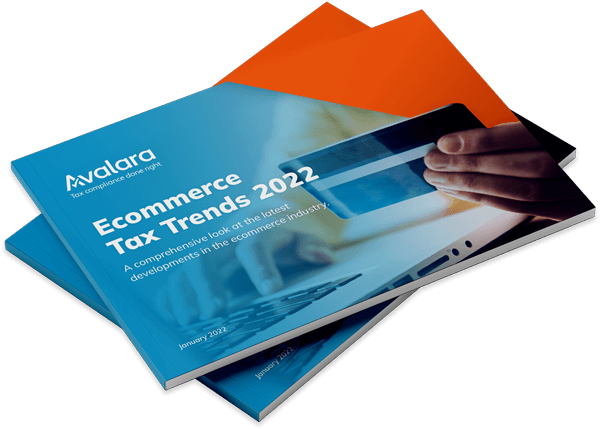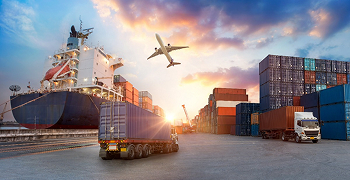
The UK is making VAT digital - MTD reaches its next milestone
Her Majesty’s Revenue & Customs’ (HMRC) Making Tax Digital (MTD) initiative reaches its next milestone on April 1 2022, as it is extended to all businesses registered for UK VAT. In recent years, businesses have had to meet new requirements around how transactions are recorded, how a VAT return is produced, and how a VAT return is filed. Effective April 1, 2022, the legislation will be extended to all UK VAT-registered businesses, regardless of their size, revenue, or where the company is based. As such, from this date every single business with a UK VAT number, including foreign companies registered as overseas traders or those with representative offices for sales and marketing, must meet the requirements detailed below.
Digital record keeping
While digital record keeping seems a quite simple and straightforward requirement to meet (as virtually all businesses already use accounting software these days), businesses should be aware that they must record the following details at a transaction level in their systems:
- The VAT on goods and services sold
- The VAT on goods and services purchased
- The correct tax point date (for purchase invoices received from vendors, this means recording the invoice date)
- The VAT rate charged (standard rate, reduced rate, zero rate, exempt, or outside the scope of U.K. VAT)
- The invoice value exclusive of VAT
- Reverse charge transactions (i.e., where VAT needs to be self-accounted by the company
- Any adjustments made to the VAT return.
It’s generally no longer acceptable to simply enter invoices into the system “gross” and manually carve out the VAT when the VAT return is prepared. In addition, the VAT amount reported on both sales and purchases must be in GBP currency (pound sterling). Therefore, it’s strongly recommended that UK sales and purchases be entered into the accounting system in this currency using the relevant exchange rates required for VAT on sales and using the GBP amount shown on the purchase invoice received from vendors.
VAT on purchases can generally be reclaimed as a credit in the VAT return, which is why the tax amount on vendor invoices must be clearly itemised in the accounts. Many businesses have realised they may need to set up new company structures in their ERP or accounting systems as well as new tax codes and tax GL accounts to meet these new digital record-keeping requirements.
Filing VAT returns using software via an API link
It’s no longer permissible to simply log in to the historic HMRC portal and manually type in and submit the VAT return figures (nine boxes on the return). Going forward, all VAT-registered businesses in the UK must first sign up for Making Tax Digital for VAT with HMRC, then use either a compatible software package or bridging software to file the UK VAT return via an API link. Unlike the current trend across Europe to submit transactional-level detail to the tax authority, it’s still only the summary VAT return that’s submitted via the API; HMRC won’t receive any additional data at this time.
Preparing VAT returns using digital links
The most significant new requirement, and arguably the most challenging for businesses, is the requirement to ensure there are clear “digital links” between the underlying digital records of the transactions and the final U.K. VAT return that’s submitted via an API link. In practice this means there must be a digital audit trail relating to the movement or modification of the tax and transactional data in the digital records including:
- XML, CSV import and export, and download and upload of files
- Automated data transfer and API transfer
- Linked cells in a spreadsheet e.g., through macros or formulas.
Fleetwood Mac famously sang “You would never break the chain.” According to HMRC, under Making Tax Digital, businesses can’t break the VAT digital chain. While HMRC may accept other forms of digital links in the VAT return preparation process, businesses should be aware that under Making Tax Digital, it’s no longer allowable to “cut and paste” or “copy and paste” data between reports and spreadsheets. This is a huge change. In addition, it’s no longer possible to manually re-enter data when preparing the VAT return.
Furthermore, HMRC doesn’t expect there to be manual adjustments in working papers and schedules when the VAT return is being prepared. Instead, the underlying digital record in the accounting system should be adjusted, and the adjusted data flows through to the VAT return. This puts a much greater responsibility on getting VAT treatment and entry into accounts correct the first time. A great example of this is that many UK businesses will manually calculate the “reverse charge” on purchases of services from non-UK suppliers when they prepare their VAT return. However, now under Making Tax Digital, HMRC would expect this to happen automatically within the accounting system or ERP. Therefore, businesses need to set up new tax codes to apply the correct VAT calculation.
What can businesses do to become compliant?
Businesses can purchase compatible software to enable them to file VAT returns via an API link. For example, Avalara has launched a Making Tax Digital compliant solution for UK VAT returns. In addition, many businesses are using Making Tax Digital as an genuine opportunity to review current VAT processes, systems, and data more widely. This could involve changing accounting software or ERP systems as well as automating the VAT calculation process to help ensure tax amounts recorded in the system are accurate, consistent, and granular enough to meet the new requirements.
Smaller businesses struggling with the new requirements may also consider outsourcing returns preparation and filing to providers that offer Making Tax Digital compliant software (although they still need to maintain digital links up to sharing the data with the compliance provider). While the carrot of streamlined VAT compliance processes, improved quality of accounting and tax data, and less errors should be a motivating factor for businesses to embrace Making Tax Digital, there is of course the stick: HMRC is creating new penalties for businesses that don’t comply. In addition, where errors are made, HMRC will likely also consider any noncompliance with digital links requirements in deciding if an error is careless if this caused a penalty and this will reduce the likelihood of being able to reduce the size of penalty applied.
Businesses should be aware of the tax digital revolution we’re seeing around the globe. The UK’s Making Tax Digital initiative is only the tip of the iceberg as more and more countries look to move toward real-time transaction level digital reporting and e-invoicing.
Dig deeper into global tax digitalisation efforts with Avalara’s global tracker.
Contact an Avalara indirect tax specialist to discuss how we can assist with MTD compliance.
Avalara MTD Cloud
Ensure full compliance with HMRC's MTD Phase 2 requirements and gain greater accuracy and efficiency through automation
Avalara MTD Cloud
Ensure full compliance with HMRC's MTD Phase 2 requirements and gain greater accuracy and efficiency through automation
Need help with your UK VAT compliance?
Researching UK VAT legislation is the first step to understanding your VAT compliance needs. Avalara has a range of solutions that can help your business depending on where and how you trade.
Total results : 4
E-invoicing in the UK
Finance and tax compliance: make your business grow faster
Germany excludes UK tourist operators from VAT TOMS
End of transitional period for Import VAT changes in France
Ecommerce Tax Trends Report 2022
Get a comprehensive look at the latest developments in the ecommerce industry.

Stay up to date
Sign up for our free newsletter and stay up to date with the latest tax news.



